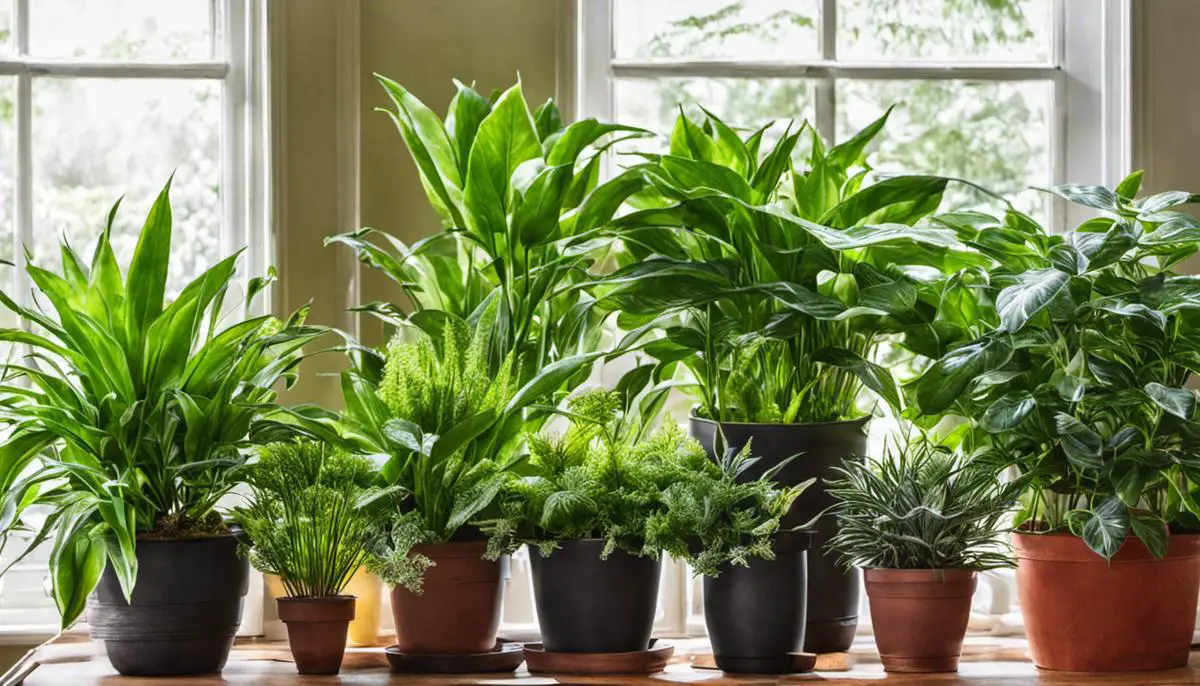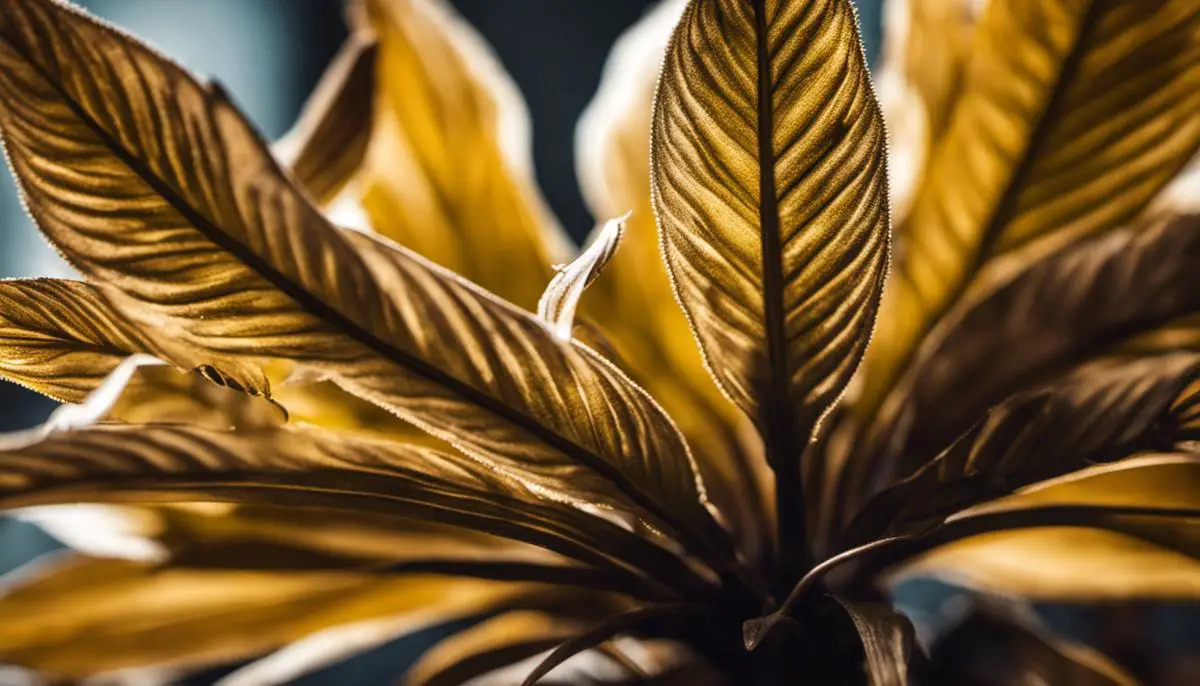Revive Dying Houseplants: A Green Thumb’s Guide
Whether your houseplants are the centerpiece of your home decor, a relaxing hobby, or a guilty pleasure, their health and vitality are essential. With proper care and the necessary knowledge, your indoor greenery can thrive year-round. This journey of understanding the fundamental needs of houseplants – including light, water, temperature, and humidity will help you effectively care for any houseplant, regardless of species or health status. Recognizing signs of plant stress, such as yellowing leaves or slow growth, enables you to diagnose and address issues before they escalate. By mastering rehabilitation techniques like correct watering methods or root pruning, you can revive your dying houseplants and restore their vibrancy.
Understanding Houseplant Needs
Understanding Basic Houseplant Needs
Identifying the fundamental needs of your houseplants is the first critical step to reviving them. Generally, most plants require light, water, an appropriate temperature, and certain humidity levels to thrive. The first thing is understanding the light requirement. Most indoor plants need bright, indirect light. Direct sunlight can often be too harsh and lead to leaf scorching, while plants placed too far from any light source can become leggy and dull.
Watering is another crucial aspect. Indoor plants usually require less water than outdoor ones. Yet, overwatering is a common error made by houseplant enthusiasts. Allow the top inch of the soil to dry out between waterings to prevent waterlogging the roots.
Next, consider temperature. Most houseplants prefer a consistent temperature that mirrors their native environment. Typically, indoor plants thrive when temperatures are between 65 and 75 degrees Fahrenheit during the day and about 10 degrees cooler at night.
Last, the humidity level plays a role in a plant’s health. The majority of popular indoor plants hail from tropical environments, which are naturally high in humidity. Therefore, dry indoor air can lead to browning leaf tips and dropped leaves. Keeping plants grouped together or using a pebble tray can increase the humidity level around your plants.
Identifying Specific Plant Needs
Remember that specific plant types can have unique care needs. For example, succulents and cacti prefer a brighter light and less watering than tropical plants. Researching your specific type of houseplant can provide further insight into their ideal care conditions.
Health Status Assessment
Plants often signal their health status through their leaves. Yellowing leaves can indicate overwatering, while brown leaf tips might signify low humidity or over-fertilization. Drooping leaves often suggest the plant is getting too much or too little water.
Learning to identify these signals can help diagnose and treat any issues promptly. If a plant shows signs of stress, such as yellowing or wilting, first assess whether its basic needs are being met. If the plant’s basic needs are being satisfied, you may need to give additional attention to root health and potential pests or diseases.
Adjusting Care According to Changing Needs
Realize that plant needs can change over time. Seasonal changes often impact a plant’s needs. For example, many houseplants need less water during the winter months when they enter a resting phase. Similarly, a shift in indoor temperature or humidity can influence how a plant grows.
Understanding these essential factors and adjusting accordingly is instrumental in reviving and maintaining a healthy houseplant.

Recognizing Signs of Stress in Houseplants
Identifying Key Signs of Stress in Houseplants
To properly care for houseplants and aid in their revival, it’s important to understand and recognize the key signs of stress. Yellowing leaves can indicate overwatering or lack of nutrients; brown leaf tips often point to irregular watering, low humidity, or too much fertilizer. Soft or mushy stems are a common sign of root rot, generally caused by overwatering or poorly draining soil. Slow growth can signify poor light conditions, incorrect temperature, or lack of necessary nutrients. Individually or in combination, these signs suggest that your houseplant is unwell and needs attention.
Diagnosing Common Houseplant Problems
Once you have identified signs of stress in your houseplant, the next step is to diagnose the specific problems.
- Overwatering: Overwatering is a common mistake in houseplant care. Symptoms include yellowing leaves, soft or mushy stems, and root rot. If your plant shows these signs, check soil moisture levels before watering again.
- Light Conditions: A plant receiving too little light often shows signs of yellow leaves and slow growth. Conversely, a plant receiving too much light may have brown or burnt tips.
- Improper Temperature: Houseplants can be sensitive to their surrounding temperature. A plant left in a drafty, cold spot might show signs of stunted growth or poor health.
- Nutrient Deficiencies: Lack of necessary nutrients may cause slow growth or leaf discoloration. Nutrient deficiencies are often caused by poor soil quality or insufficient fertilizing.
Addressing Potential Plant Illnesses
If addressing the above issues doesn’t improve your plant’s health, it may be dealing with a disease. Common plant illnesses include fungal, bacterial, and viral infections.
- Fungal Infections: Symptoms include spots on leaves or mildew. Fungal infections are common in plants that are overwatered or kept in high-humidity conditions.
- Bacterial Infections: These often cause soft, mushy stems or root rot. They are typically caused by overwatering or a lack of proper sterilization when pruning or repotting plants.
- Viral Infections: These are harder to diagnose, but can cause various symptoms like yellowing leaves, stunted growth, or abnormal patterns on leaves.
Remember, the key to reviving dying houseplants is to act quickly once problems have been identified. Regardless of the issue, most houseplants can be revived with patience and the correct treatment.

Rehabilitation Techniques for Dying Houseplants
Proper Watering Techniques
Correct watering is crucial to the health of houseplants. Plants suffering from under or overwatering may appear wilted and discolored. To ensure proper watering, ensure the top inch of the soil is dry before watering. This can be checked by inserting your finger into the soil. After watering, ensure excess water drains out of the pot. Don’t let your plant sit in excess water, as this can lead to root rot.
Repotting Plants
Repotting can be beneficial to dying plants by providing more room for root growth and opportunity to refresh the soil nutrients. Choose a larger pot with good drainage and fresh potting soil. Carefully remove the plant from the current pot, gently separating roots that are clumped together. Place the plant in the new pot and surround with new soil, patting down lightly to secure. After repotting, give your plant a good watering.
Root Pruning
Root pruning may be necessary if your houseplant has become root-bound, meaning the roots have grown so large they are taking up the entire pot. To prune roots, remove the plant from its pot and use a sharp, clean knife to trim off the bottom third of the roots. You can also make vertical cuts along the sides. After pruning the roots, repot the plant as described in the previous section, giving it plenty of fresh soil in which to grow.
Increasing Humidity
Many houseplants are native to humid environments and may suffer in the dry air of our homes, particularly during the winter. Yellowing leaves can be a sign your plant needs more humidity. Increase humidity levels by misting your plant, setting a tray of water near the plant, or using a humidifier. Also, avoid placing plants near heating vents or drafty windows.
Adjusting Light Levels
Incorrect light levels can greatly affect plant health. Some plants require lots of light while others do well in shade, so it’s important to know the light preferences of your species. If your plant’s leaves appear faded, it may be receiving too much light. Conversely, leggy growth and fewer flowers could indicate that your plant needs more light. Adjust the location of your plants as needed or use artificial grow lights to supplement natural light.
Learning to watch for signs and symptoms in your plants and adjusting care accordingly is key to reviving dying houseplants. The more you interact with and observe your plants, the more you’ll understand their individual needs.

Preventive Measures for Healthy Houseplants
Watering Strategies to Promote Plant Health
When it comes to watering houseplants, it’s important to use strategies that mimic a plant’s native habitat. For instance, cacti and succulents prefer infrequent, deep watering sessions, while tropical plants like ferns and orchids thrive on a humid environment and frequent moistening. Always ensure that excess water is able to drain out of the pot to avoid waterlogging, which can lead to root rot. You can check if a plant needs water by sticking your finger about 1 inch into the soil. If it’s dry at depth, your plant is probably thirsty.
Importance of Proper Fertilization
Plants require nutrients to grow, which they usually get from the soil. As houseplants can’t replenish their nutrients naturally, they rely on you to provide them. Using organic or mineral-based fertilizers can help in maintaining the overall health of your plants. Each plant has specific fertilizer needs, so research your plants individually to understand what they require. Over-fertilization can lead to fertilizer burn and other plant health issues, so always follow package instructions when applying fertilizer.
The Role of Regular Cleaning and Pruning in Plant Health
As dust can block sunlight and reduce photosynthesis, regular cleaning of your houseplant leaves is important. Use a soft cloth to gently wipe both sides of the leaves. Additionally, pruning or removing dying and diseased leaves and stems prevent the spread of disease and direct more energy to the health and growth of the plant. It can also help maintain the desired shape and size of the plant.
Inspecting for Pests and Disease
Regularly inspecting plants for signs of pests or disease is a crucial preventative measure. This includes checking the underside of the leaves for signs of insects, such as discoloration, spots, or webs. Catching these issues early can make treatment more effective and prevent the problem from spreading to other plants. If you do identify a problem, isolate the plant to minimize spread and treat it with an appropriate pesticide or fungicide.
Appropriate Exposure to Light and Temperature
Different plants have different light and temperature requirements, so it’s important to understand what each plant needs and to position it within your house accordingly. Overexposure to light can burn the leaves while lack of enough light can lead to weak growth and yellowing of the leaves. Misalignment in temperature requirements can lead to obvious stress signals such as wilting or loss of leaves.
By understanding these preventative measures and diligently caring for your houseplants, you can maintain their health and avoid most common plant diseases.

Photo by united_2208 on Unsplash
Prevention is always better than a cure, especially when it comes to keeping your houseplants healthy and strong. Beyond reviving dying houseplants, this journey will equip you with a toolkit of preventive measures to avoid plant sickness. By understanding the proper quantities and schedules for watering, how and when to fertilize, cleaning procedures for leaves, and effective pest monitoring strategies, you will be expertly prepared to offer your houseplants the best environment for growth. As you implement what you’ve learned, not only will your houseplants thrive, but you will also transform into a skilled indoor gardener, armed with the knowledge to curate and maintain a lush indoor oasis — a testament to the power of patience, care, and understanding of the natural world.


